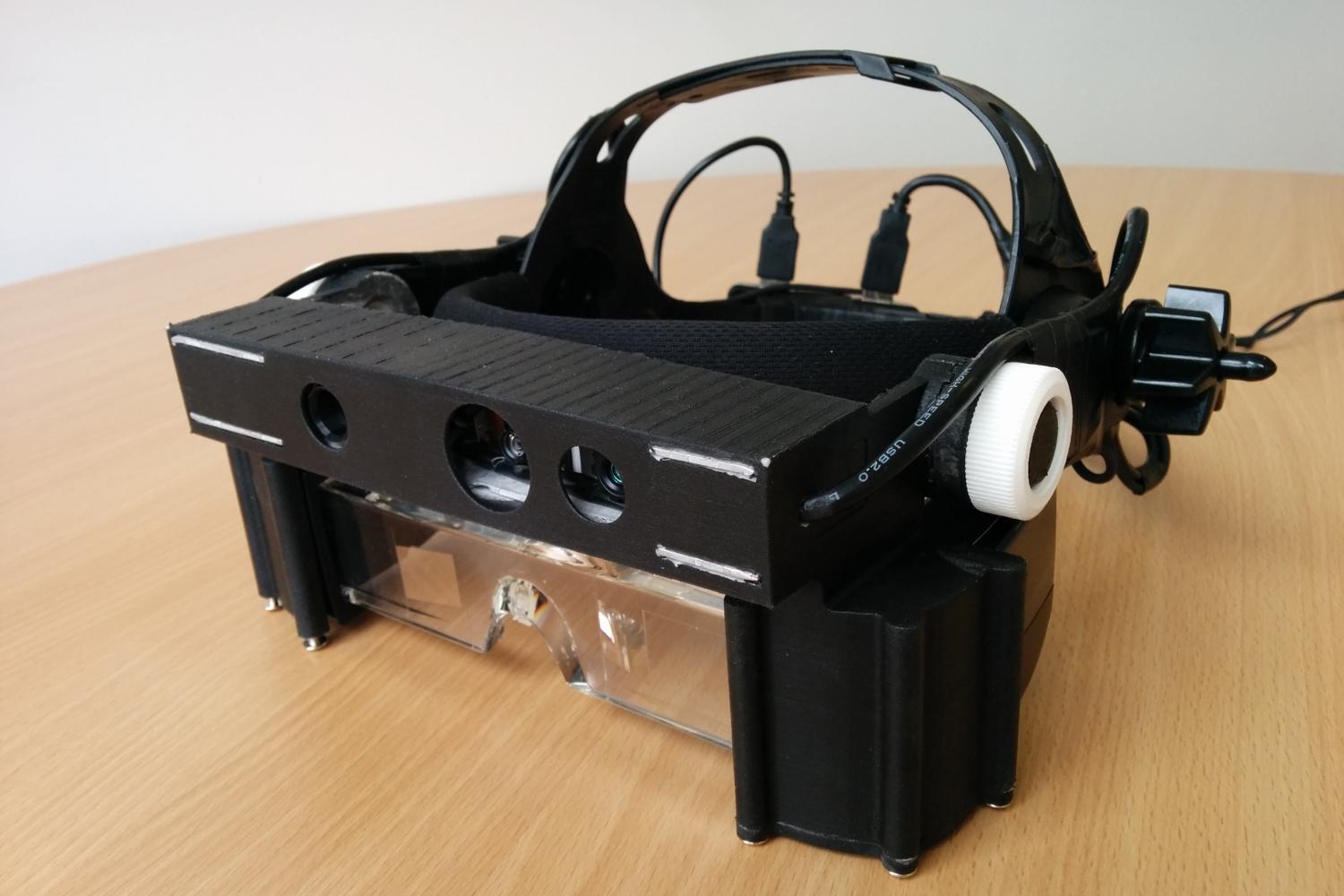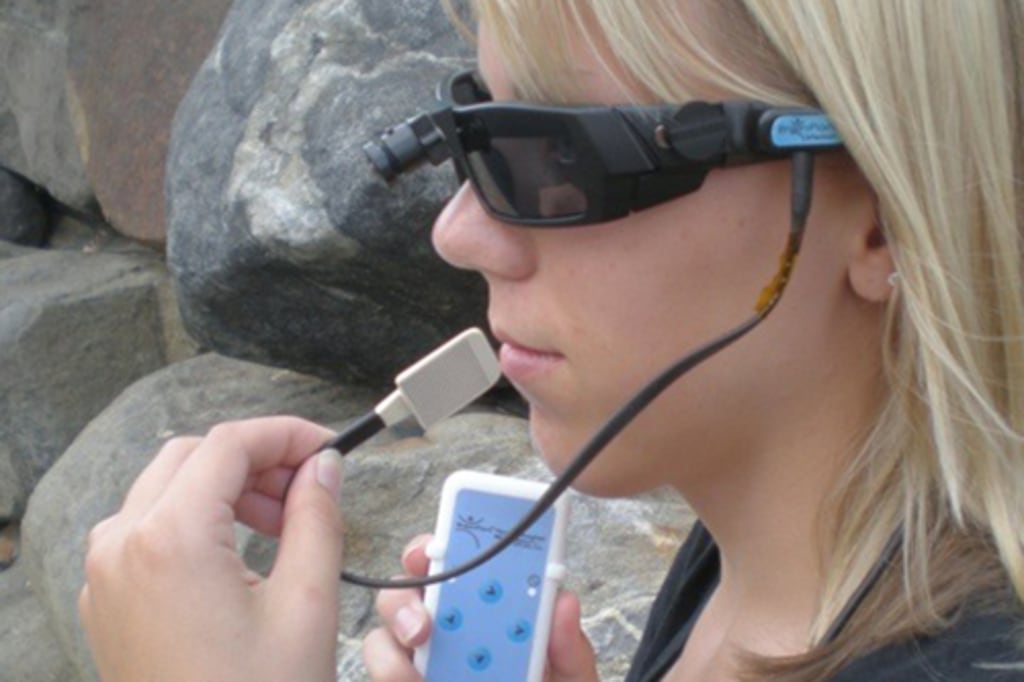A Guide to Life-altering Assistive Modern Technology for the Blind and Aesthetically Damaged
The improvement of assistive technology has ushered in a transformative era for people who are blind or visually damaged, offering tools that boost autonomy and enhance daily experiences. Developments such as clever navigation devices and AI-driven applications are redefining how users communicate with their environments, while obtainable reading remedies and clever home technologies guarantee to more raise the high quality of life.
Smart Navigation Devices
Smart navigation devices are reinventing the method individuals who are blind or visually damaged engage with their environment. These sophisticated modern technologies, which integrate GPS, audio comments, and haptic signals, give individuals with critical information about their environments, improving their independence and wheelchair.
One prominent instance is the usage of wise walking canes outfitted with sensors that spot obstacles and offer real-time feedback with resonances or audio signs. These devices enable users to browse complicated environments, such as active roads or crowded public spaces, with increased confidence. In addition, wearable tools, such as clever glasses, are being established to help in recognizing faces, reading message, and recognizing things, even more boosting the customer's spatial understanding.
Furthermore, clever navigation tools are increasingly integrating fabricated intelligence to assess information and adjust to users' choices. This tailored strategy not only boosts navigation effectiveness but likewise promotes a feeling of empowerment among customers. As technology continues to breakthrough, the possibility for wise navigation tools to develop an extra obtainable and inclusive globe for people that are visually damaged or blind remains promising, inevitably improving their daily experiences and interactions.
Innovative Mobile Applications
Mobile applications are arising as effective devices for aiding individuals that are aesthetically damaged or blind, offering an array of capabilities that boost daily living. These apps harness progressed technology to promote everyday tasks, improve ease of access, and promote independence.
One classification of innovative mobile apps focuses on aesthetic acknowledgment. Applications like Be My Eyes link individuals with sighted volunteers by means of video telephone calls, enabling real-time support for tasks such as checking out tags or browsing unfamiliar atmospheres. In a similar way, apps like Seeing AI use expert system to explain environments, checked out text, and identify items, giving customers with important details at their fingertips.
Another substantial location is navigating and alignment. Apps such as Aira and Neighboring Traveler supply audio guidance, assisting individuals browse urban spaces effortlessly. They provide tailored help, enabling for a more certain expedition of the setting.
Furthermore, health and wellness and wellness apps accommodate details demands, such as medication management and physical fitness monitoring. These applications aim to cultivate a holistic approach to well-being, ensuring that users can maintain their health separately.
Wearable Assistive Instruments
Wearable assistive gadgets stand for a substantial improvement in technology developed to support individuals that are aesthetically damaged or blind. These gadgets boost flexibility and independence by providing real-time comments regarding the surrounding atmosphere. Among one of the most remarkable wearable technologies are wise glasses equipped with sensing units and electronic cameras, which can determine barriers and relay critical info via sound signs.

One more cutting-edge option consists of wrist-worn gadgets that use ultrasonic waves to discover challenges and offer navigational aid. These devices frequently feature adjustable setups, allowing users to customize the informs to their specific needs.
The integration of man-made intelligence in wearable assistive innovation is also notable, as it continually boosts the precision and responsiveness of these devices. Overall, wearable assistive devices are changing the lives of the blind and visually impaired, promoting greater freedom and improving lifestyle through ingenious options.
Easily Accessible Reading Solutions
Available reading services play a crucial function in allowing individuals that are aesthetically damaged or blind to engage with prescription eyeglasses text across numerous formats. These solutions encompass a series of devices and modern technologies created to improve reading experiences, from conventional print materials to digital material.
One popular service is Optical Personality Acknowledgment (OCR) innovation, which converts printed text into digital layout, permitting users to listen to or review the web content utilizing screen visitors. In addition, specialized e-readers furnished with text-to-speech abilities provide personalized reading experiences, enabling users to change font dimensions and background shades for boosted exposure.
One more effective technique is braille displays, which give responsive comments by converting electronic message right into braille. This allows people to check out touch, fostering better independence and accessibility to literary works. Additionally, mobile applications designed for reviewing scanned publications or papers can empower individuals with instant access to a substantial collection of products.

Smart Home Technologies
Smart home technologies have actually transformed the method people that are visually damaged or blind interact with their living atmospheres, boosting both freedom and safety and security. These cutting-edge remedies utilize automation and connection to produce an easily accessible home customized temporary double vision to the demands of customers.
Smart speakers and voice-activated aides offer hands-free control over various devices, permitting customers to change lighting, safety, and temperature steps through straightforward voice commands. This performance minimizes dependence on sighted support and fosters a feeling of autonomy. In addition, wise lights systems can be personalized to supply acoustic responses or responsive hints, enabling people to navigate their homes extra efficiently.
Moreover, safety systems geared up with clever electronic cameras and sensing units can send real-time informs to users, improving individual security without demanding visual verification. Automated door discover this locks offer assurance, permitting users to safeguard their homes effortlessly.
Integrating smart home modern technologies not just enhances day-to-day living but additionally encourages social interaction with attached devices - Speech-to-text devices for low vision. With recurring developments in assistive technology, the future appears promising, as even more remedies will emerge to further equip people that are aesthetically damaged or blind, making sure a more inclusive and independent way of living
Conclusion
Finally, the innovations in assistive modern technology for the aesthetically damaged and blind stand for a significant leap toward boosting freedom and high quality of life. Smart navigation devices, cutting-edge mobile applications, wearable gadgets, easily accessible analysis remedies, and wise home innovations collectively cultivate an inclusive environment. This assimilation of modern technology not only improves flexibility and daily living but also empowers people to engage completely with their environments, promoting higher freedom and engagement in culture.
Innovations such as smart navigating devices and AI-driven applications are redefining just how individuals communicate with their environments, while obtainable reading solutions and wise home technologies assure to further boost the high quality of life. As modern technology continues to breakthrough, the capacity for wise navigation tools to create an extra comprehensive and easily accessible globe for people who are visually damaged or blind continues to be encouraging, inevitably improving their daily experiences and interactions.
Wearable assistive gadgets represent a significant innovation in modern technology developed to sustain people who are aesthetically impaired or blind. Among the most noteworthy wearable innovations are clever glasses outfitted with sensors and cams, which can identify barriers and relay crucial info with sound signs.
Smart navigating tools, ingenious mobile applications, wearable devices, available analysis remedies, and smart home modern technologies jointly foster a comprehensive setting.